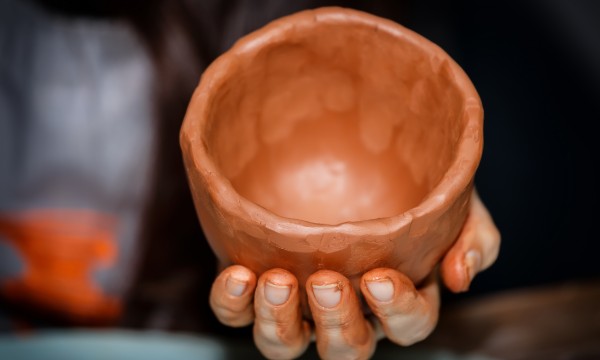Working with clay is a fun and satisfying way to express your creativity. The various types of clay possess different characteristics, from colour to texture, and can be used in different ways.
- Browse Categories
- All Tips
-
Home & Garden
- All
- Appliances
- Bathroom
- Cleaning
- Crafts
- Decorating
- Electrical
- Flooring
- Furniture
- Garage Door
- Gardening
- Green Living
- Heating
- Home Alarm Systems
- Home Maintenance
- Home Remedies
- Home Security
- Home Staging
- House Sitting
- Junk Removal
- Kitchen
- Lawn Care
- Lock Systems
- Moving
- Outdoor Living
- Pest Control
- Plumbing
- Renovation
- Roofing
- Snow Removal
- Storage
- Tools
- Tree Service
- Health
- Family
- Travel
- Auto
- More Tips
Your account is now active!

Understanding the types and uses of clay
July 29, 2015

Dig or buy?
The cheapest way to obtain clay is to dig it up yourself from your own property or to obtain permission to dig elsewhere. If you are very lucky, you may find clay that has a plastic nature and is easy to work — that is, it will form a shape without cracking and crumbling. When using large quantities of dug clay, the quality may very likely be inconsistent, so you will need to learn about the basic geology of clay material to keep using it successfully.
A much less labour-intensive way of supplying your basic material is to purchase a batch of clay from a manufacturer. Commercial clays are categorized according to the top recommended firing temperature of the clay and the coarseness of the particle size.
Raku clay
- This is usually a coarsely grained clay that fires to around 1000°C (1830°F)
- It is made to withstand the shock of firing and cooling very quickly
- Raku clay and dug clays are also often used for pit firing, dung firing, grass firing and other traditional fast-fire techniques
Earthenware clay
- Earthenware clay may be a terracotta colour but it is most commonly available in white
- Fires in the range of 1000°C to 1150°C (1830°F to 2100°F)
- It is available in different particle sizes, from coarse to fine
- The fired clay is not always well vitrified and it chips more easily than stoneware
- Pots using earthenware clays and glazes are produced widely in Mediterranean countries and are associated with white glazed and brightly decorated ware
- Other clay colours commercially available include peach and dark brown
Stoneware clay
- This clay is available in a variety of colours, from white through to mustard yellow, grey and dark brown; it may even have a speckled finish
- Fires in the range of 1240°C to 1300°C (2265°F to 2370°F)
- These clays are often fine to very fine in particle size but some are coarse and used for wheel-throwing very large pots or for handbuilt or sculptured pieces
- When fired, the clay is very hard and well vitrified
- Often the colours of the glazed surfaces are more subdued than those on earthenware pottery
Porcelain clay
- The finest pieces made from this clay are translucent when fired and have a very fine finish
- The extreme fineness of the clay body makes it hard to work and it is not recommended for beginners
National advertising powered by Mediative.com. Yellow PagesTM, Walking Fingers & DesignTM, YP.caTM, Find. & DesignTM, YellowPages.caTM, Canada411TM and YP ShopwiseTM are trademarks of Yellow Pages Digital & Media Solutions Limited in Canada. All other trademarks are the property of their respective owners. Copyright © 2018 Yellow Pages Digital & Media Solutions Limited. All Rights Reserved.
More Tips
The material on this website is provided for entertainment, informational and educational purposes only and should never act as a substitute to the advice of an applicable professional. Use of this website is subject to our terms of use and privacy policy.






